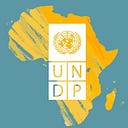Homegrown technology brings new angles to climate early warning systems
The Rwanda meteorology agency and UNDP are testing the ‘Internet of Things’ to collect and deliver early warning data for climate and disaster risk management.
Rwanda is a country highly prone to weather-induced disasters, such as floods, landslides and drought. For over 70% of the population, mostly rain-dependent farmers, real time weather information is crucial to plan for agriculture, infrastructure, and deal with emergency situations. But collecting the data can be challenging.
There are more than 300 meteorological stations installed across the country, but a hilly and complex terrain combined with changing climatic cycles make it hard to provide accurate localized forecasts. On the other hand, many of the weather stations are operated manually, requiring a staff or a volunteer to record the data on paper and send it to the central data bank in Kigali, the country’s capital city. The process is slow and susceptible to error, which can delay warning mechanisms, provide inaccurate information and lead to loss of data.
That’s why UNDP Rwanda and the Rwanda Meteorology Agency partnered with a team of professors from the University of Tokyo to set up an Internet of Things (IoT) network for climate early warning. In a first phase (PDF), cheap and easy to install wireless sensors were assembled in pilot locations most at risk, collecting real-time data on temperatures, humidity and soil moisture.
Meteo Rwanda technicians and young technology graduates were trained on assembling and setting up the sensors, while data on local internet connections, electricity access, communication channels and needs of the farmers was also collected and documented.
The team then received funding from the Norwegian Emergency Preparedness System (NOREPS) to test the concept further in a second phase. Hackathons were conducted with young programmers and technology experts to convert the data into usable information. Participants were sent to the field to get a better understanding of the needs and the winners were requested to create full prototypes in less than 30 days.
The winning prototypes included a potential early warning coordination platform using an online geographic information system; a disaster risk assessment system introducing a machine learning function; and a suite of alerting mechanisms to decentralized authorities.
Together with the pilot testing, these prototypes helped redefine the project’s problem statement, from ‘lack of data’ to ‘lack of coordination and digital data in several key junctions of the information flow’.
The result was that, instead of scaling up the IoT network, the project shifted its focus into producing an application programming interface (API) providing mobile applications’ developers direct access to the Meteorology Agency’s weather forecast data. A mobile protocol (USSD) was developed to enable weather stations’ staff across the country to send their data observations in real time, instead of recording it manually on paper. An additional Android app helps agronomists advise farmers and complement the weather forecasts.
Lessons learnt? The IoT technology itself was not the direct solution but led to innovation and impact in collateral areas.
While focused on researching and testing the IoT approach on all of the different pieces across the entire climate information value chain, including the collection, assimilation, distribution and usage of climate data, the pilot project helped gain a clear understanding of the needs of the smallholder farmers, vulnerable populations, Meteo Rwanda and other stakeholders. It allowed the team to capture key learnings that set the direction for building upon and scaling up the initiative.
Many of these findings were mainstreamed into a new 5-years joint programme with other UN agencies, addressing the issues in a comprehensive manner. The prototyping brought in new funding and new ways of getting stakeholders together while providing different options for solving long-standing challenges.
Most importantly, the ‘learning by doing’ approach built local technical capacity and resulted in a better data ecosystem around climate information, strengthening preparedness and reducing risks of disasters.
Text by Reina Otsuka / UNDP Rwanda
